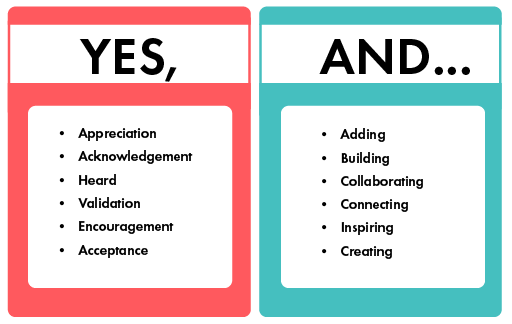3.4 Courage and encouraging
Courage and being encouraging are central to dreaming and imagining differently, where thinking and doing differently can feel uncomfortable and potentially isolating as we move away from ‘orthodox social imaginaries’ (Dey and Mason, 2018). We, by the virtue of imagining and dreaming, expose ourselves and make ourselves vulnerable, as at this point we have no evidence or formulated plan to understand whether what we are dreaming of is possible or effective. As Dey and Mason state, by creating possible different worlds we are by implication, critiquing the present, where we continue to expose the orthodoxies and stories that are currently told.
In the face of these critiques and challenges, we have to have courage and be encouraging of others who we are inquiring with to not feel overwhelmed by the tensions, dissonances and vulnerabilities that this causes. It is here in these tensions and critiques we can sometimes find the most powerful imaginings of future practices.
‘Yes, and … ’ is a theatre improvisation technique that allows improvised action to continuously build and develop, rather than being blocked. We often find ideas and discussions blocked with the phrase ‘Yes, but … ’ or ‘No, but … ’. ‘Yes, and … ’ is a way of being courageous and encouraging, as it stops us retreating into problematising, which, although comforting, can limit our ability to dream differently. The power of ‘Yes, and … ’ can be seen in Figure 6.
In your inquiry, you may be working in an inquiry team or you may be working with a range of stakeholders as part of your inquiries. In either case, the following activity can support collective imagining and dreaming. The particular process outlined below can be adapted as suitable for your context and the nature of your collaborations.
Activity 5 Collective courage activity
Gather your inquiry team, or a group of stakeholders or participants, together. If there are lots of you, you may want to break this down into smaller groups working in parallel. The purpose of this activity is to imagine and dream collectively, to think what exciting, innovative and interesting developments might be made in this area. One person in each group should concept map the emerging conversations from the group.
Ideally, everyone in the conversation will have had a chance to write stories (as in Activity 7 in Session 2) and have begun to play with them a little.
- One person will read their story out loud to the group.
- As the story is spoken, the rest of the group should identify aspects that interest and excite them.
- After the story reading is finished, the storyteller should start the conversation with the sentence: ‘One aspect of my story that I find full of possibilities for thinking about the future is … ’
- Once this starting point has been spoken, the rest of the group can then join in with the conversation using ‘Yes, and … ’ statements, to build ideas, images and thinking from this initial stimulus.
- When the building comes to a natural conclusion, either a different aspect of that story can be selected to restart the conversation or someone else can read their story out.
If at any point someone blocks by saying ‘Yes, but … ’, or ‘No, but … ’, the group should acknowledge the ‘but’, and ask the speaker to flip the statement into a ‘Yes, and … ’ or should collectively agree to note that issue separately to discuss at a later time. This is not to discount challenges, but to recognise the purpose of this part of the process is to imagine.
Comment
You may well find this process a little unnatural to start with, where conversation might feel quite stilted. This is to be expected as the first few times you undertake ‘yes, and’ conversations you will be focusing as much attention on remembering the protocols as on the content being discussed. Equally, you may find with certain groups of staff that it is easier to initially build in moments for them to write yes, and responses before speaking them. Over time you will begin to find it easier to build generatively in fluid conversation, making the group develop a more appreciative, generative stance to all aspects of professional learning.
Through approaching our immersing stories using play, wonder, hope and encouraging, we may well already be beginning to imagine and dream about future practices. But, as already discussed in Section 3, imagining differently can be a difficult process, and one which potentially can make us feel vulnerable as we critique the orthodoxies of our contexts. This can be especially felt when collaborating in imagining activities, where differences and divergences can surface.
Bushe (2013) states that he has shifted his view of the dream (imagining) phase of appreciative inquiry from a space of finding similarities in what people dream of to recognising the generative power of differentiation between voices. He argues that it is through difference and divergence that ‘a more complex, well-adapted coherence can emerge’ (p. 105–106). In doing so, you are building a more solid foundation from which you can collectively generate different ways forward.

